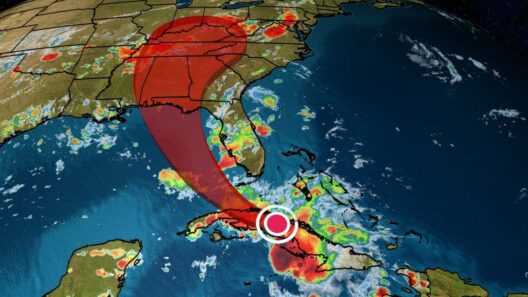When pondering the colonial past of America, one might whimsically inquire: what was the climate like in the Massachusetts Bay Colony? How did the seasons dictate the rhythms of early American life? Delving into this subject unearths not only the atmospheric conditions but also the profound impacts they had on agriculture, settlement patterns, and the daily lives of the colonists.
The Massachusetts Bay Colony, founded in 1630, encompassed a diverse range of environments, including coastal areas, low-lying valleys, and hilly terrains. The climate was primarily classified as humid continental, characterized by four distinct seasons—winter, spring, summer, and autumn—with each playing a significant role in shaping the lives of its inhabitants.
Winter in Massachusetts was often harsh and unforgiving. From December through February, the colony experienced frigid temperatures that frequently dipped below freezing. Snow blanketed the region, creating a serene yet challenging landscape. The colonists had to devise methods to survive the winter months, which included stocking food supplies and engaging in communal activities to stave off the isolation induced by the severe weather. Wood was a vital resource, harvested not only for heating but also for construction, as many structures were wooden, hastily built to withstand the biting cold.
Spring heralded a glorious resurgence of life. March through May brought thawing temperatures, and the once-barren landscape began to bloom. This transitional season was pivotal for the agrarian economy of the colony, as it marked the time for planting crops. The colonists relied heavily on the natural cycle, often consulting almanacs and engaging in rituals to ensure a bountiful harvest. Additionally, spring was a time for social renewal; as the weather improved, community gatherings proliferated. The melting of snow and the emergence of fresh flora invigorated the spirit, fostering a sense of hope and renewal.
As spring gave way to summer, temperatures rose, creating a vibrant tableau of growth. The months of June through August were characterized by longer days and warmer weather, allowing for ample agricultural production. Colonists planted diverse crops, including corn, beans, and squash—often referred to as the “Three Sisters” of Native American agriculture. The warm temperatures and abundant rainfall contributed to the fertility of the soil, but the colonists faced challenges, such as pests and diseases that threatened their crops and livelihoods.
Summer was also marked by socio-economic activities; towns would host fairs and markets where settlers could trade goods. The warmth allowed for more interaction among the inhabitants, as families and communities took advantage of the pleasant weather to strengthen social ties. However, it was in this season of abundance that one might ask: how sustainable were these agricultural practices in the long term? Were the ecological consequences considered, or were they overshadowed by the immediate benefits?
As summer faded into autumn, the landscape transformed into a palette of rich hues—vibrant reds, golden yellows, and deep oranges dominated the scenery. From September to November, the harvest season reached its crescendo. Traditionally, colonists celebrated the fruits of their labor with feasts and festivals. This season was not merely about gathering crops; it represented a culmination of hard work and the interdependence of community members. However, the onset of autumn also served as a reminder of the impending winter, casting a shadow over the celebrations.
The interplay of seasons in Massachusetts fostered a unique environmental consciousness among the colonists. The cyclical nature of the climate necessitated a keen awareness of the land and its rhythms. Colonists learned to observe subtle changes in weather patterns, from the timing of frosts to the behaviors of migratory birds. The knowledge gained from such observations became invaluable in preparations for the unpredictability of New England weather.
Yet, the colonial climate was not solely defined by its seasons; it was also shaped by broader environmental transformations. Deforestation for agriculture and wood contributed to shifts in local ecosystems, while climate events, such as droughts and storms, presented ongoing challenges. Colonists were often at the mercy of nature’s whims, leading to a precarious existence that required constant adaptation and resilience.
In reflecting upon climate in the Massachusetts Bay Colony, one cannot help but contemplate how these lessons resonate today. Modern society grapples with its own climate-related challenges—rising temperatures, erratic weather patterns, and ecological degradation. So, as we ponder the past, what can we learn from the experiences of our ancestors? How can we cultivate a similar resilience? The interplay of seasons in early America reveals a poignant truth: sustainability must be rooted deeply in our understanding of and respect for the natural world.
In conclusion, the climate of the Massachusetts Bay Colony was more than a mere backdrop; it was a fundamental force that shaped the life, culture, and economy of its people. Each season presented its own challenges and opportunities, fostering a profound connection between the colonists and their environment. This interdependence serves as a timeless reminder that the way we interact with the earth holds significant consequences for the future, urging us to consider how to maintain balance and harmony with the world around us.








